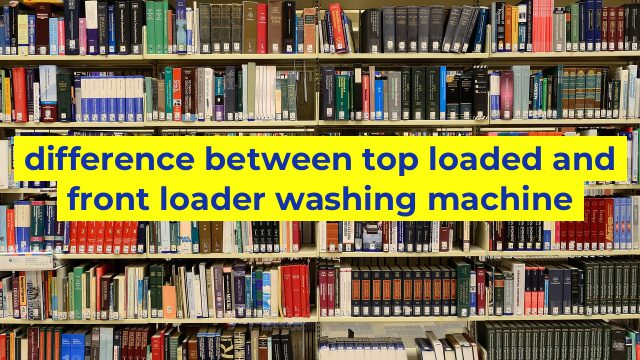The Main Differences Between Front Loader and Top-Loaded Washing Machines
Cleaning clothes is an essential task in any household, and washing machines have made this chore much easier for people. With the introduction of front loading washing machines in the market, people started to wonder if they are better than top-loading washing machines. Both machines offer various features and benefits, but there are significant differences. Here are some of the main differences to consider before deciding which one to purchase:
Design and Load Size
The design of a front-loading washing machine is, as the name suggests, loading clothes from the front. The door to the machine is located on the front and opens to load the clothes. On the other hand, loading clothes in a top-loading washing machine is done through the top. The top-loaders come with an agitator in the center or an impeller for a more gentle wash.
Front-loading washing machines typically have a larger capacity compared to top-loading washing machines. This is because of their horizontal design, which enables them to support a more considerable amount of clothes. Front loaders come in various sizes, with the largest being up to 6.0 cubic feet in capacity, and top-loaders generally have a capacity of 4.5 cubic feet.
Water and Energy Efficiency
Front-loading machines are more water and energy-efficient than their top-loading counterparts. Front-loading machines use less water as they don’t require filling a tub to the top to wash the clothes; instead, they use gravity to clean the clothes. Comparing the two, top-loading machines can use up to 45 gallons of water, while front-loading machines consume up to 18 gallons.
Energy efficiency is one of the most important factors people think about when choosing home appliances. Front-loading machines use less water for washing, which means less energy is required to heat this water.
Cleaning Effectiveness
Both machines utilize modern technology to clean clothes, but front-loading washing machines have a more efficient cleaning technology. The front-loader provides a more thorough and powerful clean, as gravity helps push clothes towards the agitator or impeller/motor. Furthermore, the tumbling action of a front-loading machine keeps clothes in constant motion, which helps to remove dirt and stains.
Top-loading washing machines have improved significantly over the years, and new models now utilize a more efficient cleaning technology by using an impeller system.
Price
Front loaders generally have a higher price tag than their top-loading counterparts. A front-loading washing machine is considered the more luxurious choice due to their additional features and technological advancements, which can set you back a lot more money than the conventional top-loader.
In conclusion, choosing a front-loading or top-loading washing machine depends on your personal preferences and needs. Front-loading machines are perfect if you’re looking for energy and water-efficient machines, a deeper cleaning cycle, and don’t mind a higher price tag. On the other hand, top-loading machines are beneficial if you prefer larger capacity options, user-friendliness and affordability.
Table difference between top loaded and front loader washing machine
| Features | Top Loaded | Front Loader |
|---|---|---|
| Capacity | Smaller capacity, usually up to 7 kg | Larger capacity, usually up to 11 kg |
| Water Consumption | More water consumption | Less water consumption |
| Energy Efficiency | Less energy efficient | More energy efficient |
| Wash Quality | Not as good as front loader | Better wash quality |
| User-Friendly | Easier access to load and unload clothes | May require stooping or bending to load and unload clothes |
| Cost | Less expensive | More expensive |
